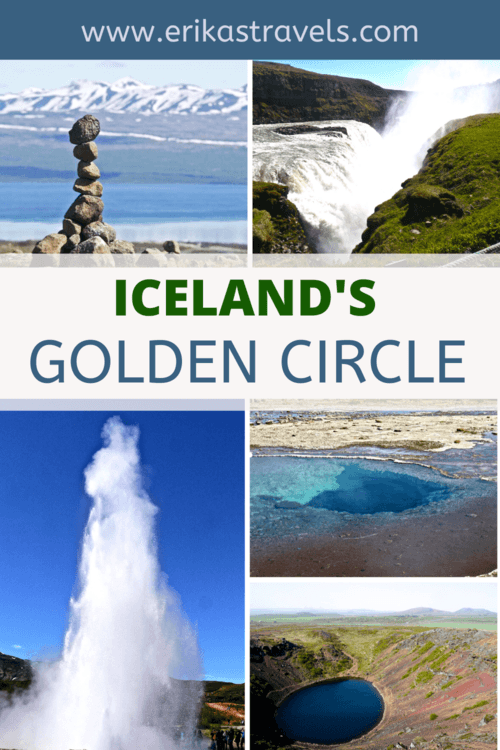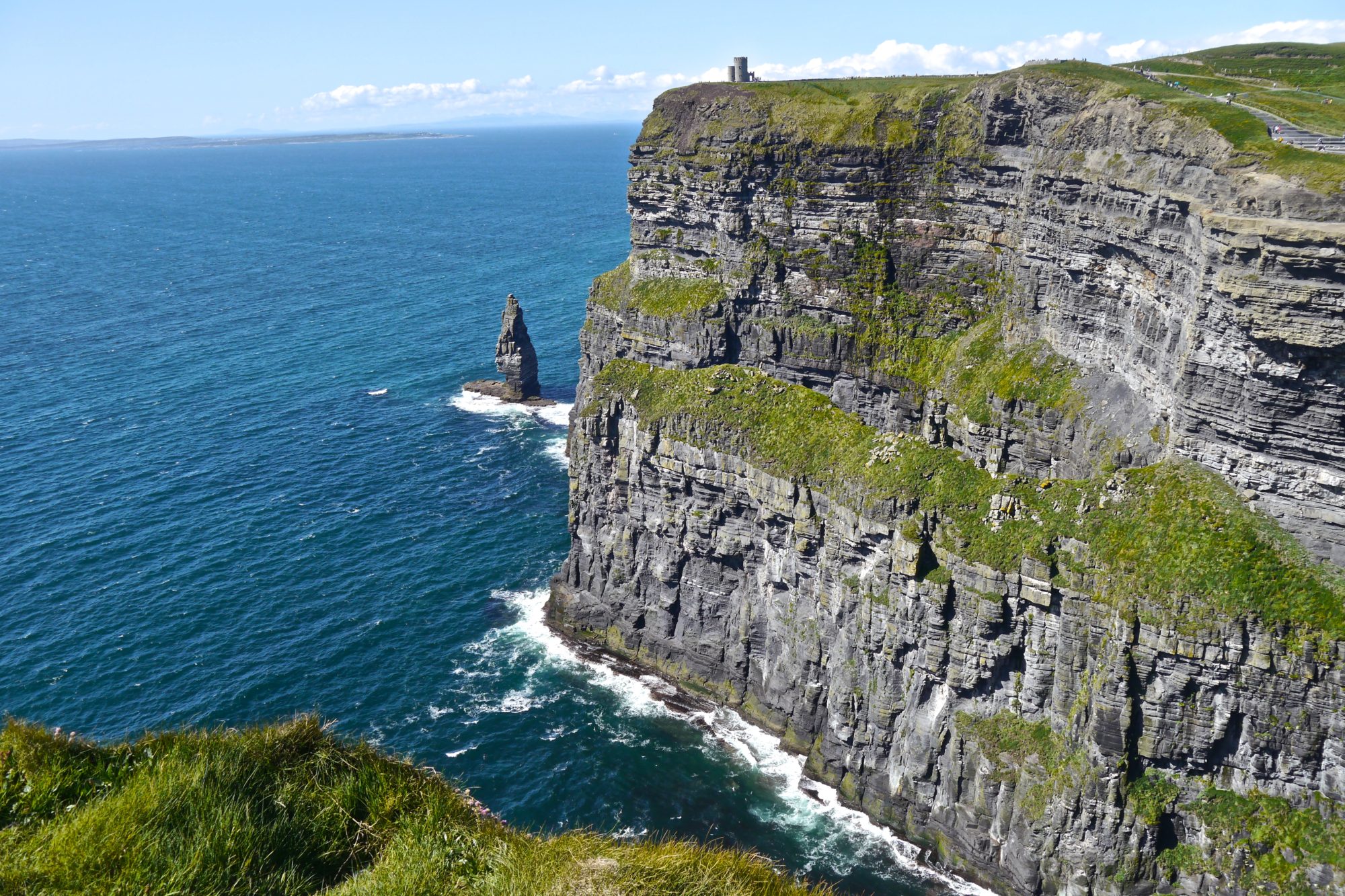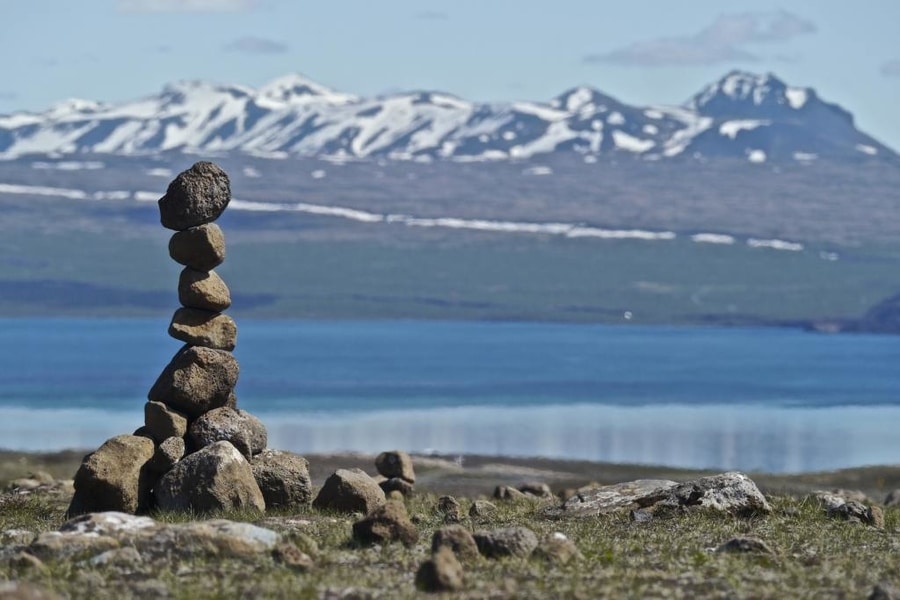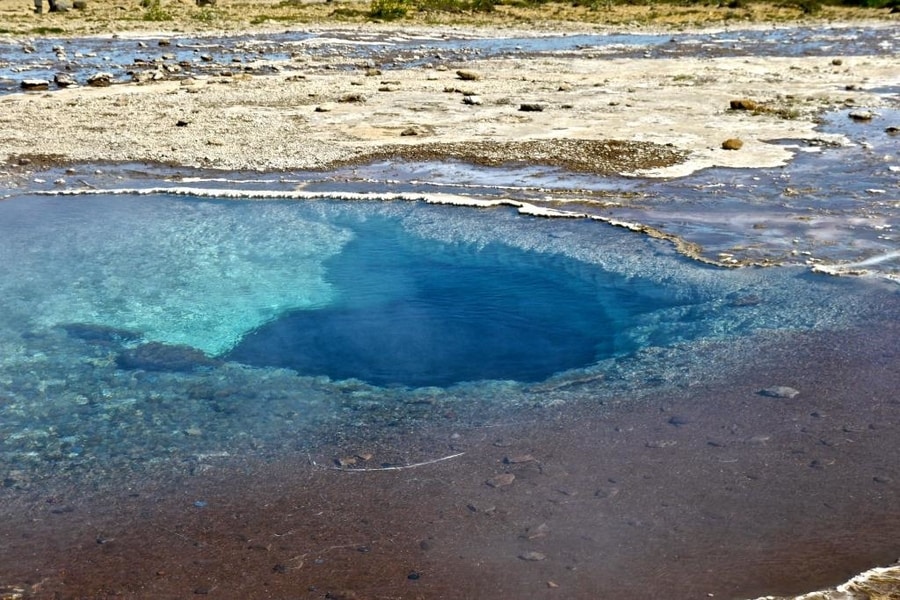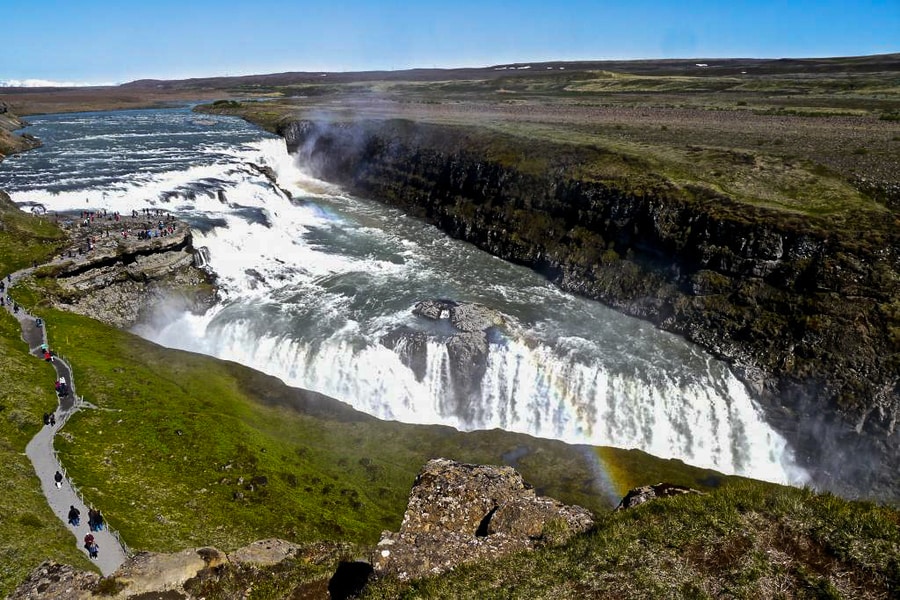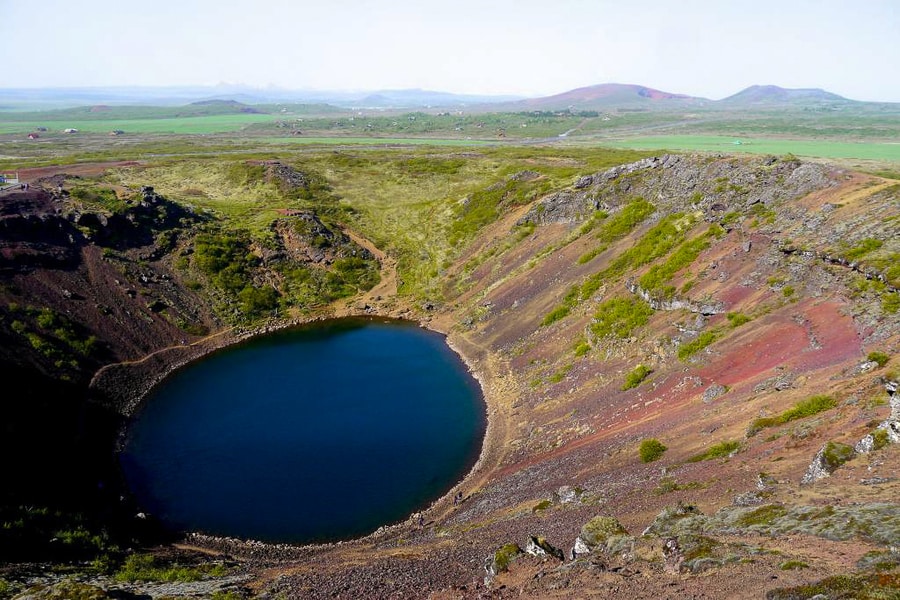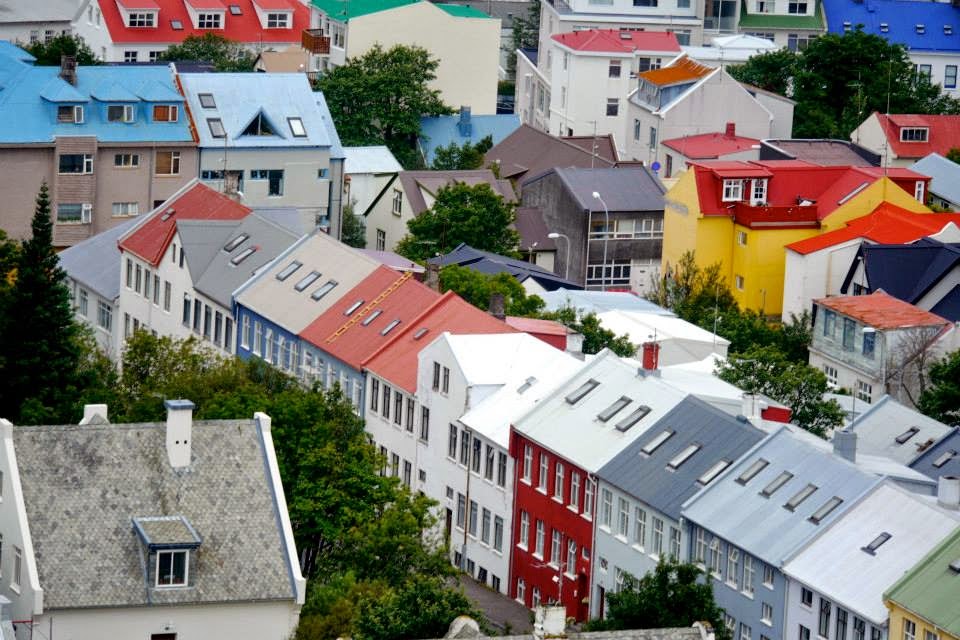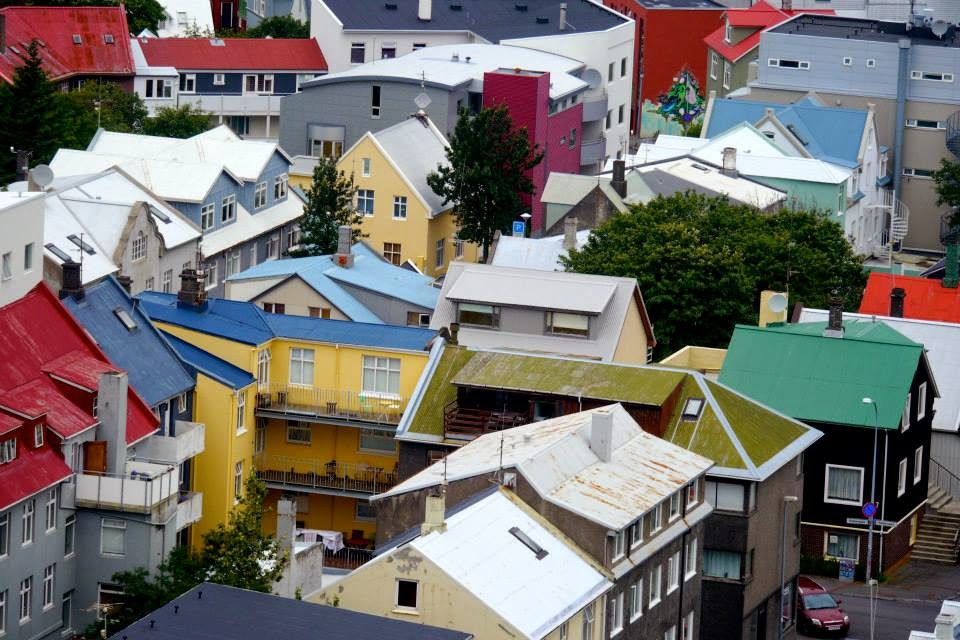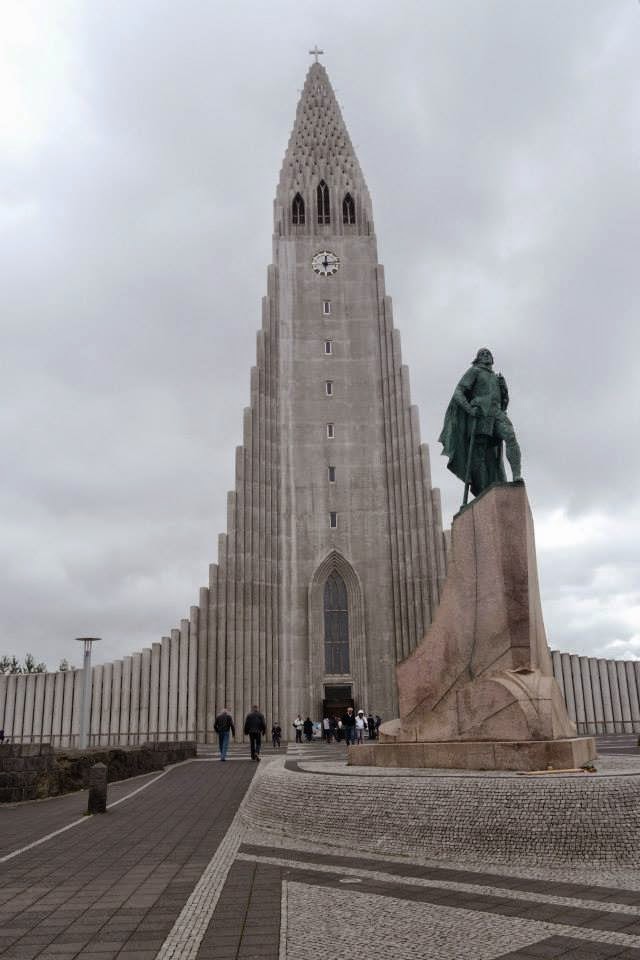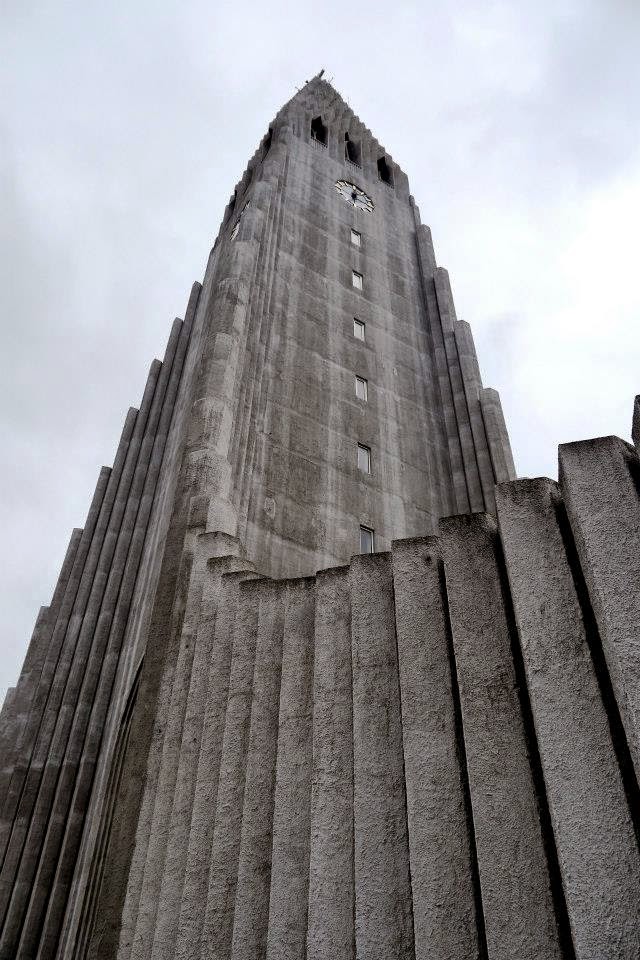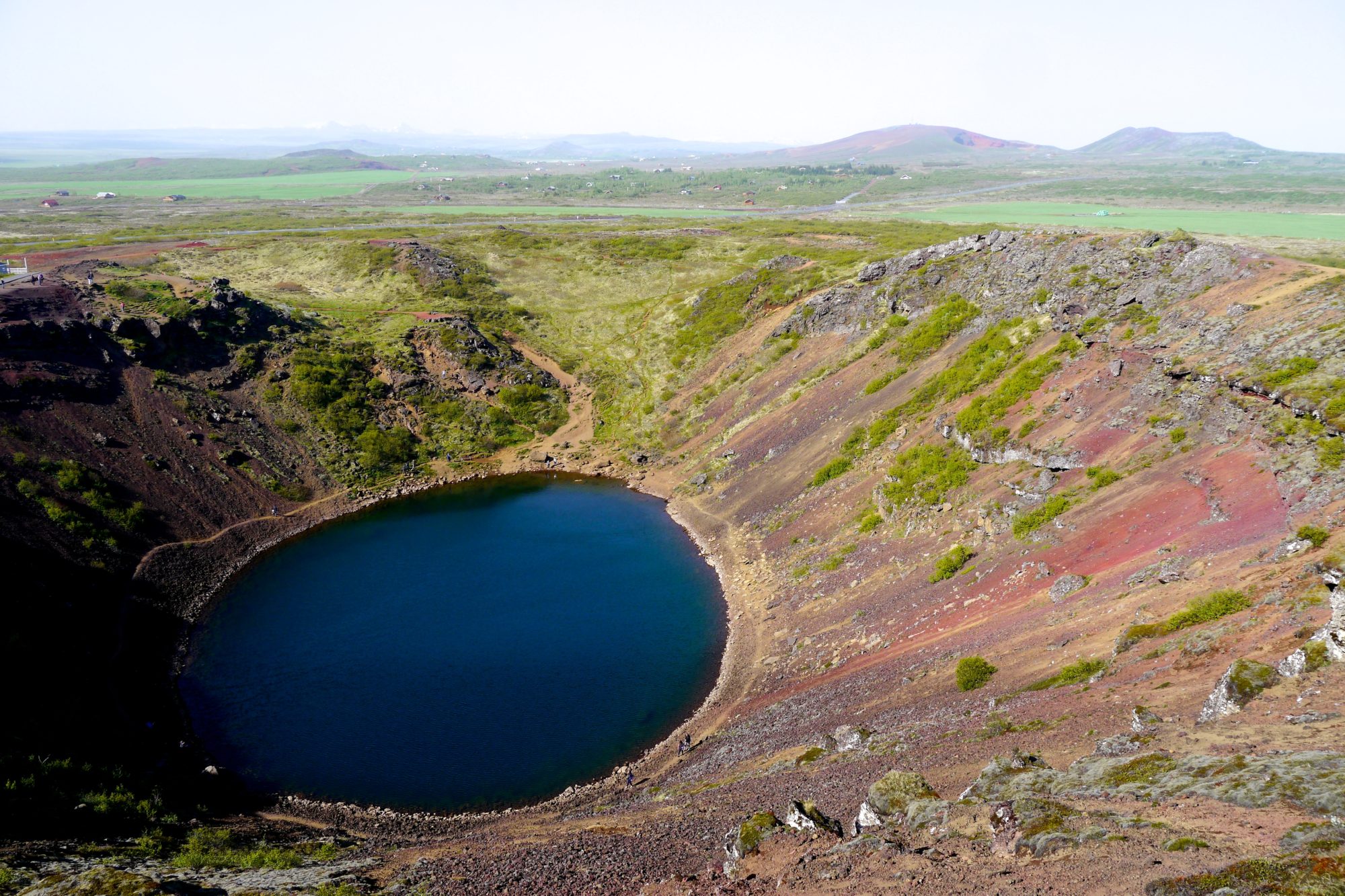
Driving the Golden Circle in Iceland
The Golden Circle offers a snapshot of Iceland’s most dramatic scenic wonders. A popular day trip from Reykjavik, it features thunderous waterfalls, spouting geysers, crater lakes, geothermal pools, and wide open roads.
In the summer of 2014, I spent a short layover in Iceland for work. My brief visit consisted of walking the streets of Reykjavik and relaxing in the Blue Lagoon.
When I left Iceland a mere 24 hours after my arrival, I vowed to return in order to explore the Golden Circle’s volcanic scenery.
So when I finally enough days off to string together a five day trip, I jumped on the opportunity to travel to Iceland solo. I desperately needed a change of scenery (yes, even flight attendants need those sometimes) and craved the wild and dramatic landscapes that photographs and blog posts told me I would find in the Land of Ice and Fire.
ATTRACTIONS ALONG ICELAND’S GOLDEN CIRCLE
The Golden Circle is one of the undeniable highlights of travel to Iceland. An easy day trip from Reykjavik, it offers views of gushing waterfalls, thundering geysers and mountain-ringed landscapes.
Alongside two newfound travel companions, I rented a car and set off to visit Iceland’s most famous tourist circuit. Driving the Golden Circle in Iceland afforded us awe-inspiring views. In contrast to the cities that I had been visiting for work—with their traffic, skyscrapers and constant crowds—Iceland was vast, desolate and completely wild.
The country’s clean, crisp air gave me the jolt of energy that I so desperately needed. Its untamed landscapes relieved all the stresses I had built up from my summer of constant flying.
Though Iceland’s Golden Circle is a popular day trip from Reykjavik, the wide-open landscapes made me feel like we had the area completely to ourselves. It was just us, the vast outdoors and the open road.
We passed snowcapped peaks, volcanic outcrops, smoking fumaroles and idyllic farms.Green pastures flanked the roadside, speckled with furry Icelandic sheep and thick-maned ponies.
ÞINGVELLIR NATIONAL PARK
The first stop on our day trip was Þingvellir National Park. Þingvellir (pronounced Thingvellir) is a site of historic, political and geological importance.
In 930AD, Þingvellir became the site of an open air parliamentary assembly that was in use until 1798.
At Þingvellir, the North American and Eurasian tectonic plates are slowly splitting apart from each other, creating deep fissures in the rocky landscape. A UNESCO World Heritage Site, it is both a site of geological importance and the location of Iceland’s first parliament.
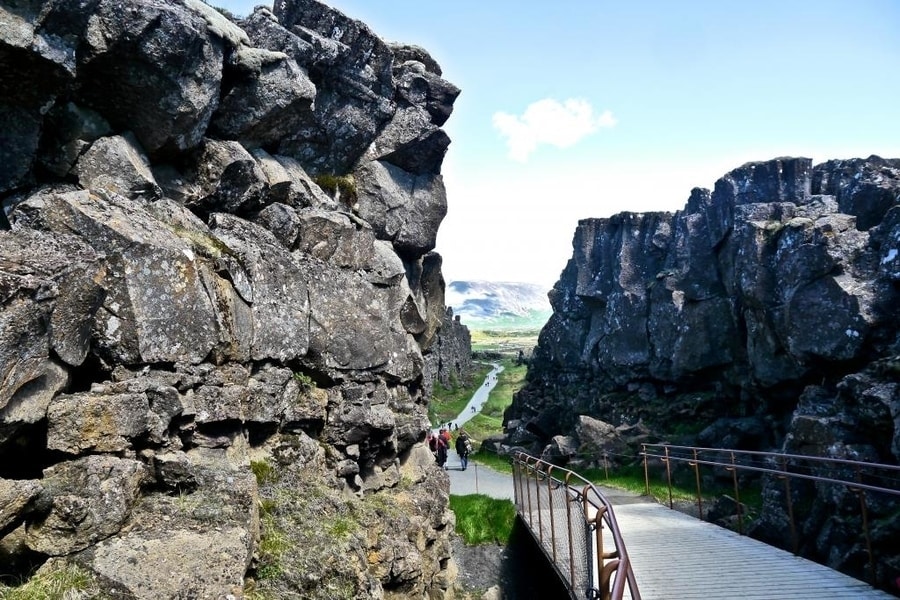
The rift valley—with its high cliffs and rocky outcrops—is one of the many geologic attractions that lie along the Golden Circle.
Nearby, the Silfra fissure is a popular diving and snorkeling location. Had a had more time in the area, snorkeling in Sifra would have been a top priority of mine.
THE GEYSERS AND FUMAROLES OF KAUKADULUR
Haukadalur was our second stop along Iceland’s Golden Circle. Haukadalur is a geothermal area about 60km away from Þingvellir National Park. The area is home to Geysir—the first geyser known to modern Europeans and the first ever recorded in print.
Geysir or geysa means “to gush” in Icelandic. The word gave birth to the modern English term “geyser.”
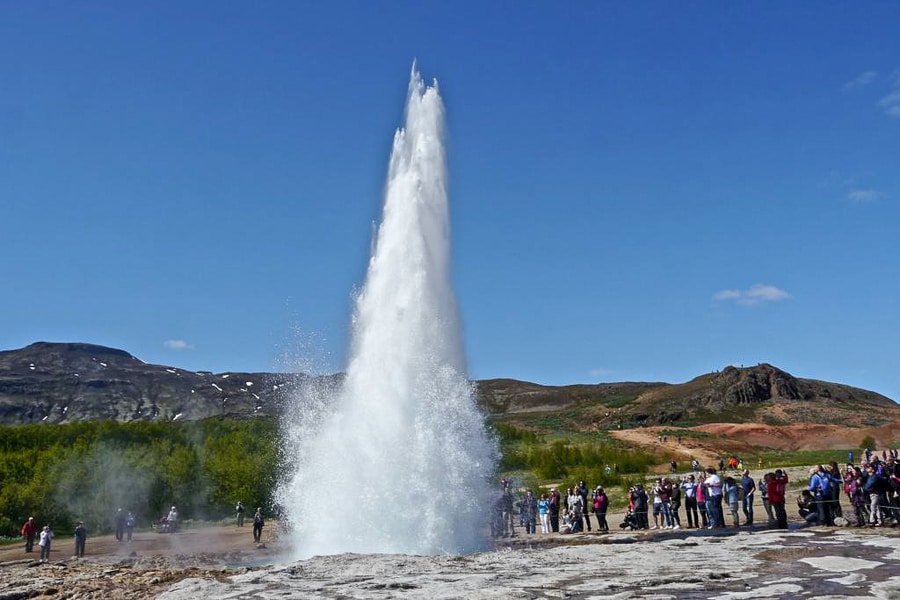
Geysir is known to spew boiling water 70 meters into the air but, due to shifting geological patterns, it has been nearly dormant for the last few decades. The nearby Stokkur geyser erupts much more frequently, however, exploding to heights of up to 30 meters every few minutes.
We walked around the steaming terrain, trying to capture pictures of the eruptions and admiring the area’s geothermal activity. Much like North America’s Yellowstone Park, Haukadalur has a sometimes putrid, rotten-egg smell and is covered in vents with rising steam, mud pools, fumaroles, bubbling springs and mineral deposits.
GULFOSS WATERFALL
Gulfoss Waterfall rounded out our visit to the Golden Circle. One of Iceland’s most beautiful and dramatic waterfalls, Gulfoss plummets down a ravine along the Hvítá River. As it tumbles, it produces thick mist and rainbow prisms.
Gulfoss is one of the world’s most iconic waterfalls and a popular Iceland road trip destination. Though it is not particularly tall, its unique form and impressive width have landed it atop the list of the most heralded waterfalls in Europe.
Standing at the top of the falls was breathtaking. To our right, we could get views of the water cascading below. To our left, the snow-capped peaks of Iceland’s volcanoes rose above fertile, green pastures.
KERID CRATER LAKE
As we were driving back to Reykjavik for the night, my travel companions and I stumbled upon an unexpected fourth and final roadside attraction. Though not always included on day trips along the Golden Circle, Kerid Lake is a worthwhile stop along the road.
Kerid Lake was formed by a volcano that collapsed into an empty magma chamber. The volcano’s red and orange walls contrast sharply to the dusting of green grass and deep blue water found in the bowl of the crater. We paid a three dollar entrance fee and then spent a bit of time walking along the rim of Kerid Lake and taking in views of the surrounding farmlands and mountains. Aside from a small group of Italian tourists, we largely had the site to ourselves.
REYKJAVIK: THE WORLD’S MOST NORTHERLY CAPITAL
Tours of Iceland’s Golden Circle begin and end in Reykjavik. And while the city has fairly few must-see attractions compared to other European cities its size, the world’s most northerly capital has its own fair share of noteworthy places to visit. For travelers wishing to taste traditional Icelandic foods and soak up contemporary Icelandic culture, Reykjavik is the obvious place to start.
Reykjavik—true to northern European form—is a neatly manicured city with spotless streets. Instead of gawking over the ornate facades of buildings or admiring the intricate interiors of the city’s churches, I enjoyed the pleasant streets and the progressive atmosphere. I found myself admiring the way the colorful houses lined up so nicely along the streets, as though they fit together seamlessly as part of a puzzle.
Yet, while the beauty of Reykjavik lies in its overall vibe than in its particular landmarks, one attraction certainly stands out above the rest (both literally and figuratively).
-
HALLGRIMSKIRKJA
The most notable landmark in Reykjavik is Hallgrimskirkja. The Hallgrimskirkja Cathedral–a 73 meter church that towers over the rest of the city–is certainly a sight to behold. Dwarfing all that surrounds it, the church is to Reykjavik what the Sagrada Familia is to Barcelona.
The cathedral, designed by architect Guojon Samuelsson, was completed in the 1980s. Architecturally, it is fascinating. It’s peculiar flowy design is meant to represent the lava that is found throughout Iceland’s volcanic landscape though, to me, it seemed more like a massive pipe organ rising from the surrounding neighborhood.
*****
I had anticipated spending an additional day in Iceland touring the country’s Southern Coast by myself, since my fellow travelers had plans to leave the following day. Despite my trying to convince them to prolong their stay, they were undecided.
After stepping foot on the raw and untamed wilderness and breathing the country’s fresh air, however, it no longer took much convincing. Their decision was unanimous. I could see that Iceland was enchanting them. Drawing them in.
My new friends decided to stay an extra day.
I breathed a sigh of relief knowing that I would not have to join a loud and crowded tour bus after all. We would keep our rental car, drive the country’s untouched south coast, and once experience the country’s raw and wild scenery in great company.
_______________________________________
Did You Enjoy This Golden Circle Road Trip Itinerary for Iceland? Pin It!
